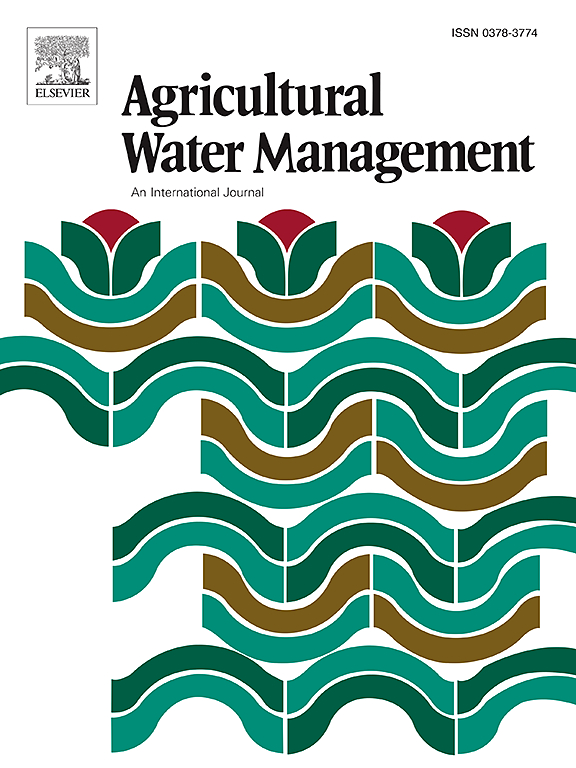Present and future challenges for hydraulic reliability and energy efficiency in collective irrigation systems: A participatory modelling approach
IF 5.9
1区 农林科学
Q1 AGRONOMY
引用次数: 0
Abstract
The HubIS project, through a participatory approach with stakeholders, identified the need to assess the hydraulic and energy performance of the Lucefecit Collective Irrigation System (LCIS) for co-designed future scenarios. With this aim, a tool was developed integrating on-farm demand driven water transport and distribution with energy use. The tool results from a participatory modelling process based on the SIGOPRAM software parameterized and tested for the LCIS current conditions (2022) using a comprehensive data set. The current scenario, in which only 48 % of the command area is irrigated, is characterized by good hydraulic performance, although pressure surpluses were detected in most outlets. Co-designed scenarios anticipate an increase in the irrigated area and a shift towards more water-intensive crops, which could result in up to a 163 % in the peak demand flow compared to the current situation. Even in the most demanding scenario, only a few irrigation outlets experience pressure deficits, accounting for 10 % of the irrigable area. Collaborative discussions with stakeholders resulted in a trade-off strategy between hydraulic reliability and energy efficiency. The tool provides the water users associations with an important basis for decision-making supported by system performance assessment, to ensure sustainability in water and energy use while taking in account future climate and agricultural changes.
求助全文
约1分钟内获得全文
求助全文
来源期刊

Agricultural Water Management
农林科学-农艺学
CiteScore
12.10
自引率
14.90%
发文量
648
审稿时长
4.9 months
期刊介绍:
Agricultural Water Management publishes papers of international significance relating to the science, economics, and policy of agricultural water management. In all cases, manuscripts must address implications and provide insight regarding agricultural water management.
 求助内容:
求助内容: 应助结果提醒方式:
应助结果提醒方式:


